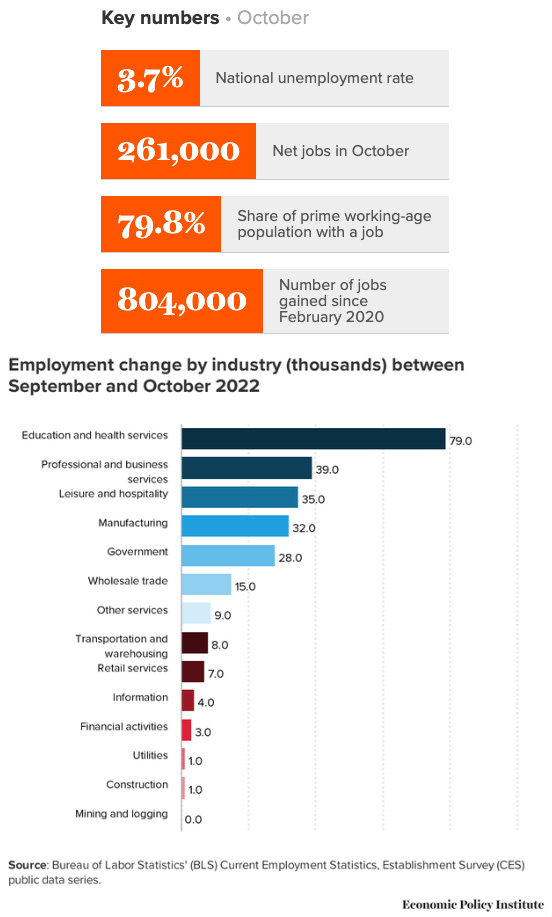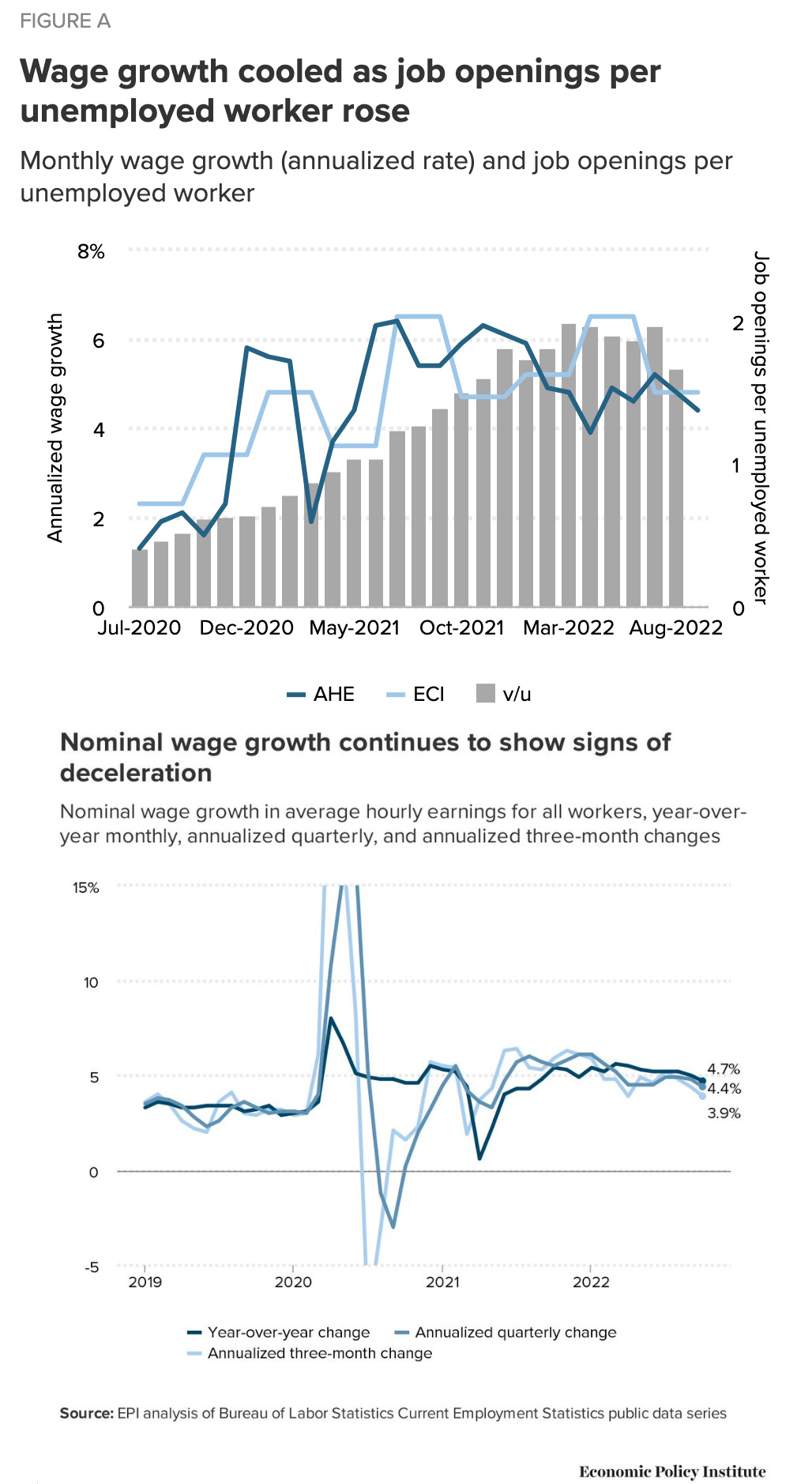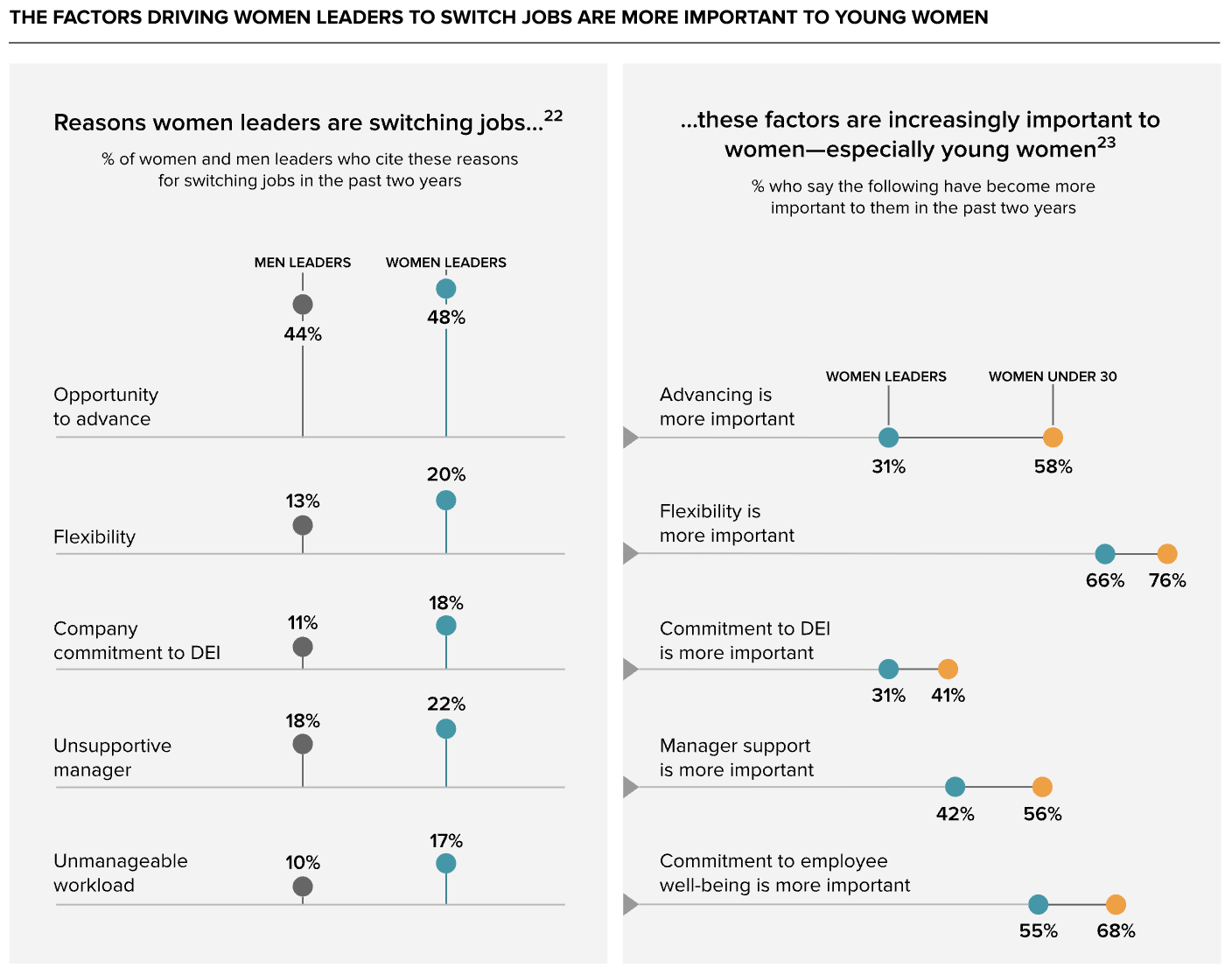Economic Update: November 2022
Change State Friends,
With the season turning, we hope you are finding a chance to recharge and spend quality time with loved ones as we kick off the festive season. Here at Change State we’re excited about building new connections and creating opportunities to share and learn through our series of fall virtual events.
Relationships are important to us, and as we move into a time of year when things naturally turn inward, it feels right to invest time in meeting new people and sharing new ideas. We’re excited to build upon the success of our first event in October, and we’d love to see you join us at our next event on November 29th! We are always interested to hear your ideas for making these events an even better opportunity for talent professionals to connect and grow – suggestions welcome.
Please find below your economic update for November. Stay well and enjoy the holiday season!

Economic Snapshot
October’s jobs report was somewhat of a surprise, adding 261,000 payrolls in October, surpassing estimates closer to 200,000-205,000. The overall report was a relatively mixed picture however, with unemployment at 3.7%, slightly higher than projected estimate. Some are viewing that rather positively, noting that it could be a sign of the labor market cooling without the threat of the economy collapsing. And while the 261,000 addition for October seems relatively small compared to strong gains since December 2020, it still outperforms precedent. The US economy averaged only 183,000 jobs a month over the course of the decade before the pandemic.
Following signs of a cooling labor market, some economists believe a “soft landing” – normalizing inflation while avoiding recession – is yet within reach. These experts point to substantial disinflation in the system that will allow inflation to normalize in coming months, even if the labor market remains strong. In fact, in key markets for inflation stabilization (housing and labor), noticeable disinflation is already happening. Yet patience will be required to avoid overcorrecting the market and increasing the risk of recession. Official price indices, particularly the consumer price index (CPI), mostly reflect developments that occurred up to a year ago. If the Fed waits until CPI measures of housing have cooled off before relenting on interest rate hikes, they run the risk of overshooting.


Remaining cautiously optimistic, last week’s CPI report hinted that inflation might actually finally be turning a corner. Year-over-year inflation was down to 7.7%, the lowest it has been since January 2022. Core CPI, which excludes the volatile activity from food and energy, measured 6.3% for the year ending in October, down from the 6.6% posted in September. However, many central bankers suggest that they are not yet done raising interest rates, and they expect to hold them there for some time in order to appropriately weigh down the economy. Risks that could keep inflation elevated persist, especially as consumer demand remains resilient and the labor market strong. Still, the data in the recent CPI report shows encouraging trends that could help reduce inflation more decisively in 2023.
What else?

- Twitter commentary on the October Jobs Report from the EPI
- Last month LeanIn.org and McKinsey published their 2022 Women in the Workplace report. One key finding: DEI is very important to women leaders (they spend 2x as much time on these efforts as men) but organizations are missing an opportunity to formally recognize this work. As a result, women are 1.5x more likely to leave an organization for another that is more committed to DEI.
- Texas has the two US cities with the highest net migration rate (both gain and loss!). Take a guess which and check your answers alongside other employment trends and national hiring data in LinkedIn’s November Workforce Report.
- Pandemic stimulus programs lifted many Black, Latino and Asian households to first-time home ownership – the sharpest increase since the Great Recession, according to recent analysis of federal data.
- A sobering read: Forbes has put together a running timeline of the year’s biggest layoffs here.
- The labor shortage has pushed employers to consider a historically overlooked source of talent: the formerly incarcerated. A recent SHRM study found that 46% of HR practitioners said they recruited people with criminal records more often than they did a year ago.
- Have you heard of “overemployment”? The rise in remote work has spurred many employees to secretly work more than one full-time job. Proponents tout financial security and an opportunity to turn the tables on decades of under-compensation and exploitation – there’s even an online support community. Read more about this growing trend here and here.
(Sources: CNBC, CNN, Wall Street Journal, The New York Times, The Brookings Institution, Economic Policy Institute, LinkedIn, Washington Post, Wired, Forbes, NPR, LeanIn.org)
